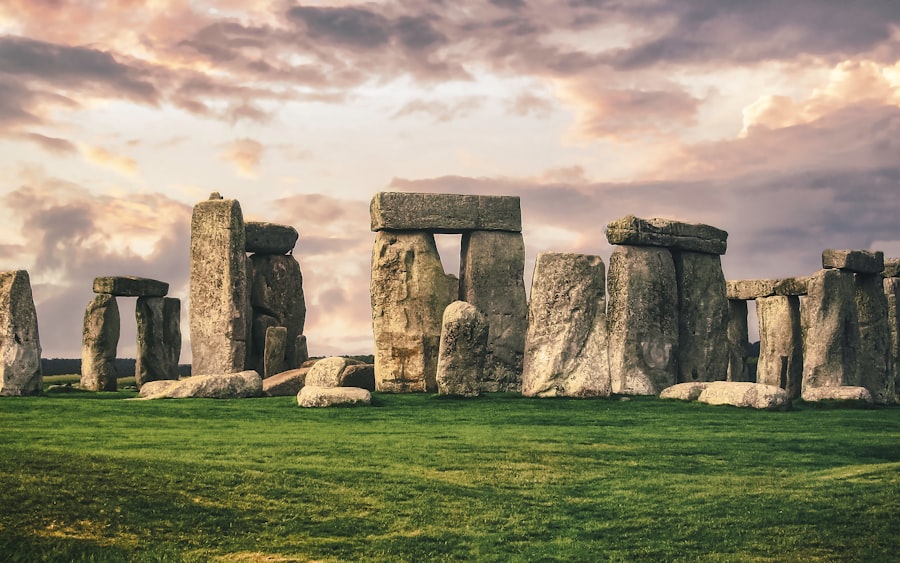Download links
How to install Banaue Rice Terraces: A Marvel of Ancient Engineering APK?
1. Tap the downloaded Banaue Rice Terraces: A Marvel of Ancient Engineering APK file.
2. Touch install.
3. Follow the steps on the screen.
Description
Nestled in the mountainous region of Ifugao in the Philippines, the Banaue Rice Terraces are often referred to as the “Eighth Wonder of the World.” This breathtaking landscape, characterized by its intricate, tiered fields carved into the mountainside, showcases the ingenuity and resilience of the indigenous Ifugao people. Spanning over 2,000 years of agricultural history, these terraces not only serve as a testament to ancient engineering but also reflect a deep cultural heritage that has been passed down through generations. The terraces are not merely agricultural fields; they are a living testament to the harmonious relationship between the Ifugao people and their environment.
The Banaue Rice Terraces cover approximately 10,360 square kilometers and are believed to have been constructed around 2000 years ago. The terraces rise to an elevation of about 1,500 meters above sea level, creating a stunning visual spectacle that attracts visitors from around the globe. The rice grown in these terraces is not just a staple food; it is also integral to the Ifugao culture, symbolizing life, sustenance, and community.
The terraces are a UNESCO World Heritage Site, recognized for their cultural significance and outstanding universal value, making them a focal point for discussions on sustainable agriculture and cultural preservation.
Key Takeaways
- The Banaue Rice Terraces are an ancient engineering marvel located in the Philippines, known for their stunning beauty and cultural significance.
- Built over 2,000 years ago by the Ifugao people, the terraces are a testament to their ingenuity and sustainable agricultural practices.
- The construction of the terraces involved intricate engineering techniques such as stone walls, irrigation systems, and water management to create flat platforms on steep mountain slopes.
- The terraces have had a profound impact on the local culture and environment, shaping the way of life for the Ifugao people and preserving biodiversity in the region.
- Despite preservation efforts, the Banaue Rice Terraces face challenges such as soil erosion, population decline, and the impact of tourism on the fragile ecosystem. Ongoing conservation efforts are crucial for their survival.
History and significance of the Banaue Rice Terraces
The history of the Banaue Rice Terraces is deeply intertwined with the Ifugao people’s way of life. It is believed that the terraces were constructed by hand using simple tools, reflecting a profound understanding of the local environment and agricultural practices. The Ifugao people developed sophisticated methods for irrigation and water management, allowing them to cultivate rice in an otherwise challenging mountainous terrain.
This agricultural innovation not only provided food security but also fostered social cohesion among the Ifugao communities. The significance of the Banaue Rice Terraces extends beyond their agricultural function. They are a symbol of cultural identity for the Ifugao people, representing their ancestral heritage and traditional practices.
The terraces are often associated with various rituals and ceremonies that celebrate rice planting and harvesting, reinforcing communal bonds and cultural continuity. The terraces also serve as a living museum, showcasing traditional farming techniques that have been preserved over centuries. As such, they play a crucial role in maintaining the cultural landscape of the Ifugao region.
Engineering techniques used in building the Banaue Rice Terraces

The engineering techniques employed in constructing the Banaue Rice Terraces are a remarkable feat of human ingenuity. The terraces were built using locally sourced materials such as stone, mud, and bamboo, demonstrating a deep understanding of the natural environment. The Ifugao people utilized gravity to their advantage by designing a complex system of irrigation channels that diverted water from nearby rivers and streams into the terraces.
This careful planning ensured that each terrace received adequate water supply while minimizing erosion and soil degradation. One of the most impressive aspects of the engineering behind the Banaue Rice Terraces is their adaptability to the mountainous terrain. The terraces were constructed in a series of steps or levels, allowing for efficient water drainage and preventing landslides.
The walls of each terrace were built with dry stone masonry techniques, which not only provided structural stability but also allowed for natural drainage. This engineering prowess reflects a profound understanding of hydrology and soil mechanics, enabling the Ifugao people to cultivate rice sustainably in an environment that would otherwise be inhospitable for agriculture.
Cultural and environmental impact of the Banaue Rice Terraces
| Aspect | Metric |
|---|---|
| Age | More than 2,000 years old |
| UNESCO World Heritage Site | Yes |
| Impact on Culture | Integral part of Ifugao culture and traditions |
| Environmental Impact | Conservation efforts to preserve the terraces |
| Tourism | Major tourist attraction in the Philippines |
The cultural impact of the Banaue Rice Terraces is profound, as they embody the spiritual beliefs and practices of the Ifugao people. The terraces are often associated with various rituals that honor rice as a sacred crop. For instance, before planting season, rituals are performed to seek blessings from ancestral spirits and ensure a bountiful harvest.
These practices not only reinforce cultural identity but also promote environmental stewardship among the Ifugao communities. From an environmental perspective, the Banaue Rice Terraces play a crucial role in maintaining biodiversity and ecological balance in the region. The terraces provide habitat for various plant and animal species, contributing to the overall health of the ecosystem.
Additionally, the traditional farming practices employed by the Ifugao people promote sustainable agriculture by minimizing chemical inputs and preserving soil fertility. The use of organic fertilizers derived from local resources further enhances soil health while reducing environmental degradation.
Preservation efforts and challenges facing the Banaue Rice Terraces
Despite their historical and cultural significance, the Banaue Rice Terraces face numerous challenges that threaten their preservation. Rapid urbanization, climate change, and shifts in agricultural practices have led to significant degradation of these ancient structures. Many younger generations are migrating to urban areas in search of better opportunities, resulting in a decline in traditional farming practices.
This exodus has left many terraces abandoned or neglected, leading to erosion and loss of biodiversity. In response to these challenges, various preservation efforts have been initiated by both local communities and government agencies. Organizations such as the Ifugao Heritage Foundation work tirelessly to promote sustainable agricultural practices and raise awareness about the importance of preserving the terraces.
Educational programs aimed at younger generations emphasize the value of traditional knowledge and encourage them to engage in farming activities. Additionally, initiatives focused on eco-tourism have been developed to provide economic incentives for local communities while promoting conservation efforts.
Tourism and economic impact of the Banaue Rice Terraces

Tourism has become a significant economic driver for the region surrounding the Banaue Rice Terraces. Each year, thousands of visitors flock to this UNESCO World Heritage Site to marvel at its stunning beauty and learn about its rich cultural heritage. The influx of tourists has created job opportunities for local residents in various sectors such as hospitality, guiding services, and handicraft production.
This economic boost has helped sustain local communities while fostering a greater appreciation for their cultural traditions. However, tourism also presents challenges that must be carefully managed to ensure the long-term sustainability of the terraces. Increased foot traffic can lead to soil erosion and damage to the delicate irrigation systems that have been maintained for centuries.
To mitigate these impacts, local authorities have implemented measures such as designated walking paths and visitor education programs that emphasize responsible tourism practices. By balancing economic development with environmental conservation, stakeholders aim to protect this invaluable cultural landscape for future generations.
Comparison with other ancient engineering marvels
The Banaue Rice Terraces stand alongside other ancient engineering marvels such as Machu Picchu in Peru and Petra in Jordan, each representing unique adaptations to their respective environments. Like Machu Picchu’s terraced agriculture designed for steep Andean slopes, the Banaue Rice Terraces exemplify how indigenous peoples have ingeniously transformed challenging landscapes into productive agricultural systems. Both sites reflect a deep understanding of local ecosystems and sustainable practices that have endured through time.
Similarly, Petra’s water management systems showcase advanced engineering techniques that parallel those found in Banaue.
These comparisons highlight a shared human endeavor: adapting to environmental challenges through innovative engineering solutions that not only sustain livelihoods but also create lasting cultural legacies.
Future prospects for the Banaue Rice Terraces
Looking ahead, the future prospects for the Banaue Rice Terraces hinge on effective management strategies that prioritize both preservation and community engagement. As climate change continues to pose threats to traditional agricultural practices, adaptive strategies will be essential for ensuring food security while maintaining cultural heritage. Research into climate-resilient rice varieties and sustainable farming techniques can empower local farmers to adapt to changing conditions while preserving their ancestral knowledge.
Moreover, fostering partnerships between local communities, government agencies, and non-governmental organizations will be crucial for implementing comprehensive conservation initiatives.
Ultimately, preserving the Banaue Rice Terraces requires a collective commitment to safeguarding this extraordinary cultural landscape while honoring the traditions that have shaped it over millennia.
FAQs
What are the Banaue Rice Terraces?
The Banaue Rice Terraces are ancient terraces carved into the mountains of Ifugao in the Philippines. They are often referred to as the “Eighth Wonder of the World” and are a UNESCO World Heritage Site.
How were the Banaue Rice Terraces created?
The terraces were hand-carved over 2,000 years ago by the ancestors of the indigenous Ifugao people using minimal equipment. They were created to make the mountainous terrain suitable for rice cultivation.
What is the significance of the Banaue Rice Terraces?
The terraces are not only a stunning example of ancient engineering and agricultural practices, but they also hold cultural and spiritual significance for the Ifugao people. They are a symbol of their connection to the land and their ancestors.
How big are the Banaue Rice Terraces?
The terraces cover approximately 10,360 square kilometers of mountainside and are estimated to stretch about 20,000 kilometers if laid end to end.
Can visitors explore the Banaue Rice Terraces?
Yes, visitors are welcome to explore the terraces and the surrounding villages. There are hiking trails and guided tours available for those who want to experience the beauty and history of the area.





